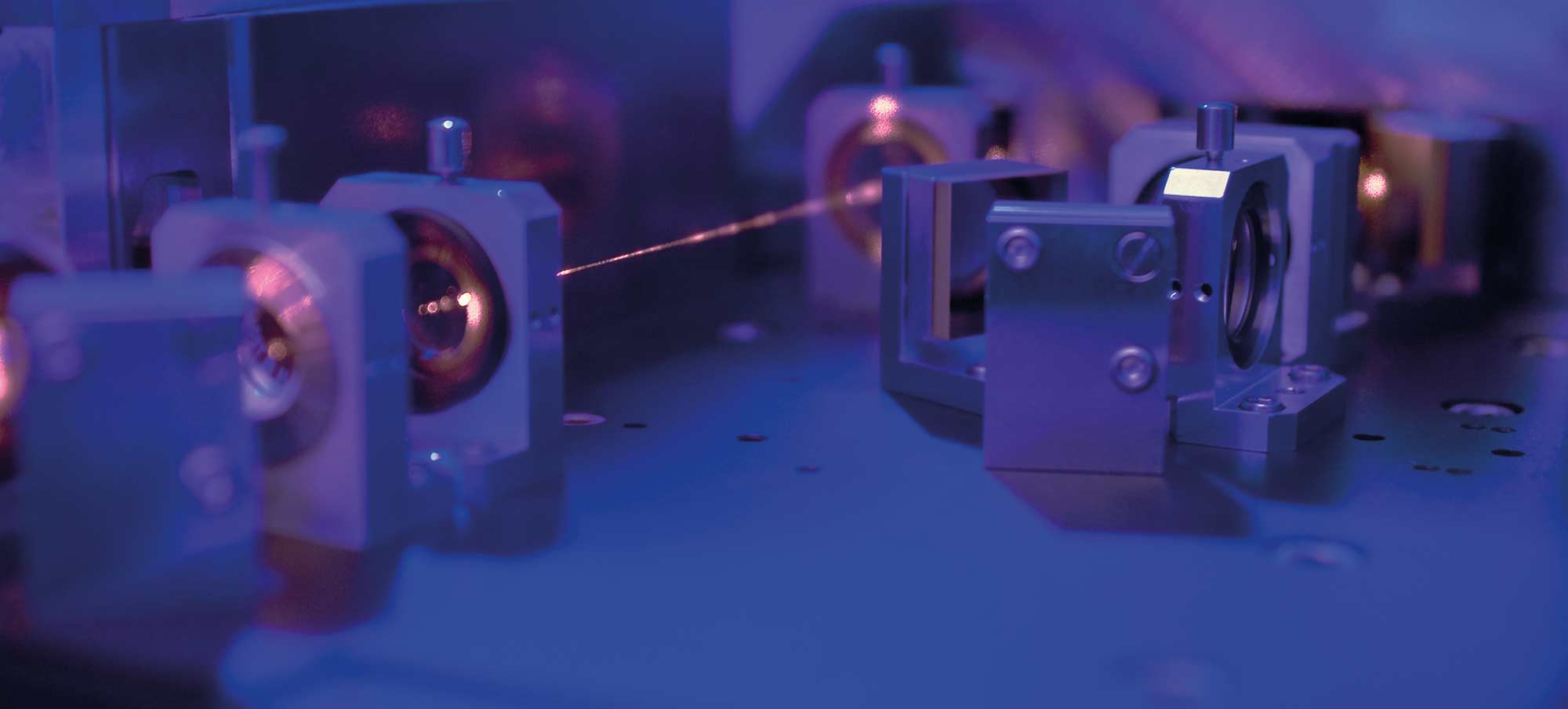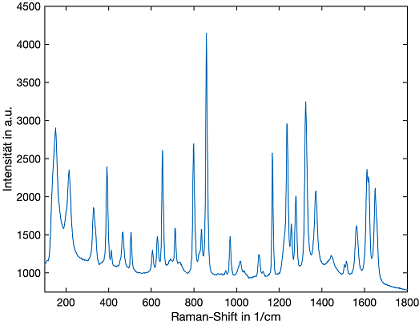A spectroscopic fingerprint identifies chemical substances
As a vibrational spectroscopy technique, Raman spectroscopy provides detailed spectra of chemical substances similar to infrared spectroscopy. As opposed to an IR spectrometer, however, a Raman spectrometer captures this information in the visible spectral range and thus avoids the particular challenges of the infrared spectral region. The figure below shows a Raman spectrum of acetaminophen and illustrates the high information density of those spectra, which is essential for the reliable identification of chemical substances or the determination of pure substance concentrations in complex mixtures.
In comparison to other common techniques, Raman spectroscopy offers various advantages, in particular when used in process technology:
- high information density when compared to NIR and UV/Vis spectroscopy
- trouble-free measurements in aqueous media (as opposed to IR spectroscopy)
- the Raman effect is linked to the polarizability of molecules and not to their dipole moment (as in IR absorption), enabling the detection of homonuclear molecules such as N2, H2, O2
- good detection of non-polar groups (-S-S-, -C-S-, -C=C-)
- extended spectral range well below 1000 1/cm, possible e.g. for the detection of weak bonds, all the way down to hydrogen bonds
- measuring in the visible spectral range, no need for elaborate optical components
- inline measurement: only one access point required, measurement in backscattering geometry (as opposed to transmission spectroscopy)
- possibility of using optical fibres for light transmission over long distances or for multi-plexing
- spectrometers do not have moving part
At the same time, the use of Raman spectroscopy implies numerous challenges. First and foremost, the small cross section in the interaction with molecules increases the technical effort, so that costs and benefits should be weighed up depending on the intended use.
Fraunhofer IPM can draw on many years of experience in the design and construction of Raman measurement systems and offers support in the design of measurement systems, the adaptation of commercial spectrometers to customer specifications or the development of specific Raman systems.
Our range of services covers the entire project cycle – from the simulation and estimation of performance, through the design and testing of the measurement system, to data processing, chemometrics and processing software.

